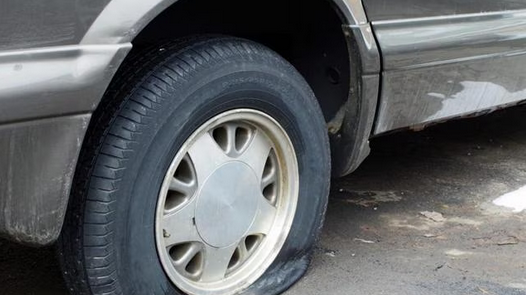
A tyre burst is one of the major causes of road accidents not only in Kenya but around the world.
It can occur due to various factors, often stemming from improper maintenance or harsh driving conditions.
One of the primary causes is incorrect tyre pressure-both overinflation and underinflation can weaken the tyre structure, making it more susceptible to failure.
High-speed impacts, such as hitting potholes, curbs, or road debris, can also lead to sudden bursts, especially if the tire is already compromised.
Additionally, overloading a vehicle places excessive stress on the tyres, increasing the risk of failure.
Driving in hot weather or at high speeds for extended periods generates excessive heat and friction, which can further weaken the tire material.
Ageing and wear also play a crucial role- old, worn-out tyres with cracks or bald spots are far more likely to burst.
Regular maintenance and proper tire care could be the only solution to help prevent such incidents and ensure safer driving.
According to Digital Driving School, after a tyre bursts, checking for oncoming traffic before exiting the vehicle is crucial for your safety.
Contacting roadside assistance or a towing service is the next step, and if safe to do so, inspecting the damaged tire. For those equipped with a spare tire, following the vehicle's manual instructions to replace the damaged tire is advised.
Here is a step-by-step guide to changing a tire.
The first thing that you need to do when you are in such a situation is to stay calm and gradually reduce your speed before pulling over to a safe location away from traffic, preferably on a flat surface.
You should then turn on your hazard lights to alert other drivers and the engage the parking brake and place wheel wedges around the tyres to prevent rolling.
After this, gather the necessary tools, which include a car jack, lug wrench, wheel wedges, flashlights (if it is dark) and gloves which is optional to help you in the process.
But first, you ought to ensure that you have a spare tire and whether it has required pressure that is safe to drive on.
“T-Type” temporary spares, also called “mini-spares,” require 60 psi (420 kPa). If the tire needs pressure, drive (slowly) to a service station immediately," Bridgestone Americas, which specialises in the manufacture and sale of various brands of tires, says.
The process of changing a tyre begins with loosening the lug nuts.
You should not remove them completely yet; just loosen them slightly while the tire is still on the ground.
Locate the correct jacking point near the flat tyre then position the jack securely and raise the car until the flat tyre is about six inches off the ground.
Fully unscrew the loosened lug nuts and keep them in a secure place then gently pull the flat tyre off the hub and set it aside.
Take the spare tyre align with the wheel bolts and push it onto the hub and tighten the lug nuts onto the wheel.
Slowly lower the car back to the ground using the jack.
Once the car is fully lowered, use the lug wrench to tighten the lug nuts in a crisscross pattern to ensure even pressure.









